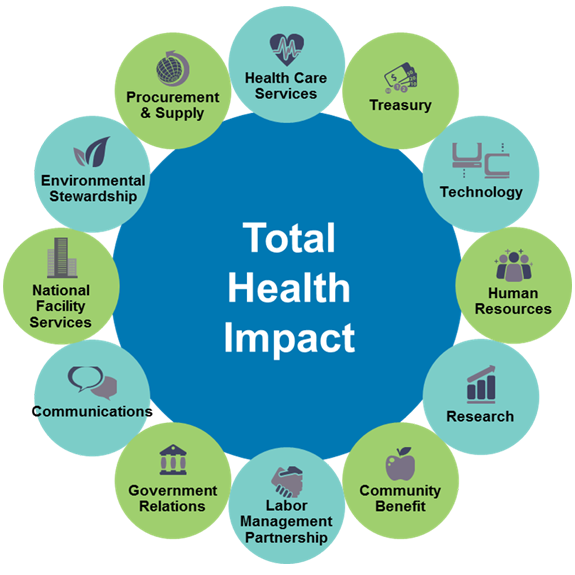In her 20 years of research, Kathryn Edin, distinguished professor in the Department of Sociology at Johns Hopkins University, has chronicled the loss of the rich network of neighborhood institutions that knit communities together and create “social cohesion.”
During a plenary session at the 2016 Reinventing Our Communities conference, Edin framed the discussion of social cohesion by examining how anchor institutions should focus their investments and resources. The conference session also highlighted neighborhood outreach and adult education initiatives of academic campuses such as Drexel University in West Philadelphia and health-care initiatives of Kaiser Permanente that broaden the traditional missions of these institutions to foster positive change in the neighborhoods and communities that surround them.
In Edin’s most recent book, Coming of Age in the Other America,1 she and her co-authors observed that the youth who connect to neighborhood institutions such as recreation centers and police athletic leagues in low- and moderate-income communities in Baltimore had both a greater sense of identity and a greater chance to succeed.
To further underscore the essential role of anchor institutions, Edin reflected on the challenges presented by the closing of community centers in Baltimore and the closing of 34 neighborhood Roman Catholic schools in Philadelphia. Residents felt abandoned as a result of the loss of community spaces and activities. In the void left by the departure of traditional community gathering spaces, strategies that build upon the staying power and scale of anchor institutions, specifically universities, hospitals, and other place-based powerhouses, are becoming more visible.
The basic reality that anchor institutions can’t easily relocate makes them unique in an otherwise mobile economy. Consequently, they are frequently the last employers remaining in urban centers that have been abandoned by other private employers and are thus a good place to start reinventing communities.
Edin also provided the context for the panel on what is means to live in poverty. She highlighted the impact of income instability, as featured in her book (with H. Luke Shaefer), $2.00 a Day: Living on Almost Nothing in America.2 Work contracts in which the employer is not obliged to provide a minimum number of working hours, combined with rising monthly rents, have eroded the social safety net and a sense of community. In 1996, when the tighter restrictions from the Temporary Assistance for Needy Families (TANF) program were enacted, 87 percent of eligible families in Pennsylvania were accessing those benefits. In 2016, only 31 percent were receiving assistance from TANF in the state and just above 20 percent were receiving assistance nationally.
Drexel University
University City in West Philadelphia is situated directly across the Schuylkill River from the downtown business district of Center City. The eastern side of the area is bounded by campuses of the University of Pennsylvania and Drexel University, several medical and research institutions, and Amtrak’s 30th Street Station. The commitment of John A. Fry to serve the neighborhoods of University City started long before his current role as president of Drexel University. During his earlier tenure as an executive vice president at the University of Pennsylvania, Fry earned national recognition for his role in revitalizing the neighborhood around Penn campus.3 Restaurants, coffee bars, a large new student bookstore, a luxury hotel, and a new elementary school began to transform the neighborhood, as did university initiatives with community groups.
Upon taking the helm of Drexel, Fry’s goal was to make Drexel the most civically engaged university in the nation. He posed two questions to his faculty, staff, and students: What are the moral and practical obligations of an urban anchor institution like Drexel to its surrounding community? Is Drexel, in fact, a good neighbor? He confessed his concern at the time that the university was not viewed as such. Fry articulated that the guiding principles to Drexel’s strategy had to be sustainable. Also, Drexel did not want to offer solutions in search of a problem or make hollow promises. Finally, Drexel needed to approach its neighbors with humility with the expectation that there will be skepticism and distrust.
The Dornsife Center for Neighborhood Partnerships became Drexel’s first initiative to create a shared future with its neighborhood’s stakeholders. The center is located in Powelton Village approximately one mile from the university’s campus. Officially opened in June 2014 in a renovated 19th-century mansion, the center serves as a hub for community outreach activities developed and delivered by the university’s faculty, staff, and students that include a free law clinic, a health and wellness center, community education programs, and even cooking classes. Initially described by Fry as an “old-fashioned extension center,” he was quick to mention that the monthly community dinners that are hosted at the center can attract as many as 300 people on a given evening and help strengthen social cohesion.
In March 2016, Drexel announced plans to build Schuylkill Yards, a $3.5 billion new district that will encompass over 14 acres and, when completed in 2036, will comprise five million square feet of office, lab, residential, hotel, retail, and open space. At the core of the project is Drexel Square, a 1.3-acre park at 30th and Market Streets that will be constructed on a current surface parking lot directly across from 30th Street Station. Construction of the first phase is scheduled to begin this year.
Fry envisions that Drexel, both as a physical space and a community, will serve as a bridge between the Schuylkill Yards development and the Promise Zone initiative established in the neighborhoods surrounding the West Philadelphia campus. The Obama administration initiative targets a small geographic area in selected urban, rural, and tribal communities, giving local partners the support and resources they need to work together toward revitalization. Drexel partnered with the City of Philadelphia, which was one of only three U.S. cities awarded a Promise Zone designation in 2014.
Kaiser Permanente
Tyler Norris, vice president of Total Health Partnerships at Kaiser Permanente, opened his remarks at the plenary session with a sobering statistic: “Many children born today will live five years less than their parents.” With as much as 18 percent of the United States GDP being spent on health care, Norris observed that “more health care doesn’t buy us more health.” He stated that 80 percent of health care spending goes to address chronic illness such as diabetes, obesity, and heart disease, and that much of this spending could instead be shifted to the economic, social, and environmental drivers of health.
Kaiser Permanente, the nation’s largest integrated health-care provider, uses its business practices and assets to strengthen the local communities that it serves. Kaiser Permanente promotes the model of “total health,” a holistic framework focused on leveraging all of its assets to maximize physical, mental, and social well-being for its members and the communities in which they reside and work. This concept reflects the recognition that an individual’s health is not determined primarily by the care and treatment received at a health-care facility. Rather, health is most affected by the conditions where people live and work, making factors such as financial security and stable housing critical components of community health.

Kaiser Permanente applies its assets for health by engaging each region and each key functional area to leverage operations in driving economic, environmental, and social impacts upstream from health outcomes.
Figure courtesy of Tyler Norris of Kaiser Permanente.
Because of its economic capacity, the health-care sector is well situated to address these social determinants. Kaiser Permanente, one of the largest private employers in California, purchases vast quantities of goods and services and has significant investment and philanthropic portfolios. These assets can be brought to bear to improve community health. Kaiser Permanente specifically has realigned its resources for sourcing and procurement, workforce pipeline development, training, investment capital, educational programs, research, community health initiatives, environmental stewardship, and clinical prevention to achieve a vision of “total health.”
Kaiser Permanente advances workforce wellness initiatives for its employees and customers by increasing access to healthy foods and physical activity in schools and neighborhoods, and it reduces the organization’s institutional carbon footprint by purchasing green energy. The health-care system works with community-based organizations, local and state governments, businesses, and residents to achieve healthier neighborhoods. Norris believes that “community-based organizations and community development organizations are the producers of good health; Kaiser Permanente is the buyer.” He cites initiatives in East Oakland, CA, in which the company is partnering with churches and faith-based communities to change lifestyle patterns. Additionally, Kaiser Permanente prioritizes supplier diversity, spending more than $1.5 billion on goods from women- and minority-owned firms in 2014 alone in order to spur and expand economic growth in minority communities.
Norris echoed Fry’s assertion that an anchor institution’s community development initiatives must be for the long term and sustainable. He believes that the previous model of making a three- to five-year grant to address social determinants of health is not sufficient. “Grants don’t work because they don’t change behavior,” he said.
Conclusion
The panel highlighted the leadership roles of anchor institutions as durable entities that are deeply rooted in their neighborhoods. These institutions have accepted the challenge of a growing movement to leverage their resources in order to address critical issues such as education, economic opportunity, and health. Drexel University is acting as an indispensable partner to revitalize a community in West Philadelphia. Kaiser Permanente, for its part, is catalyzing change in its large network of communities to achieve a holistic vision of total health. In an era of declining government and private investment, anchor institutions have become the agents of community and economic development.
The views expressed here do not necessarily represent the views of the Federal Reserve Bank of Philadelphia or the Federal Reserve System.
[1]Stephanie DeLuca, Susan Clampet-Lundquist, and Kathryn Edin, Coming of Age in the Other America. New York: Russell Sage Foundation, 2016. In the book, the authors observed that youths from economically disadvantaged families struggled with a “severe poverty of information” and did not have the opportunity to explore whether a career fit their interests and skills before they made a commitment to that career. As a result, they moved in and out of multiple trade schools and programs. For information about the book, see www.russellsage.org/coming-age-other-america.
[2]Kathryn Edin and H. Luke Shaefer, $2.00 a Day: Living on Almost Northing in America. Boston: Houghton Mifflin Harcourt, 2015. For further information, see www.twodollarsaday.com/.
[3]Alan Finder, “A College President Whose Credentials Stress Taking Care of Business,” New York Times, March 5, 2008; available at www.nytimes.com/2008/03/05/nyregion/05face.html.

